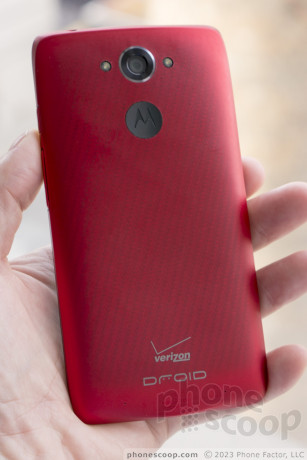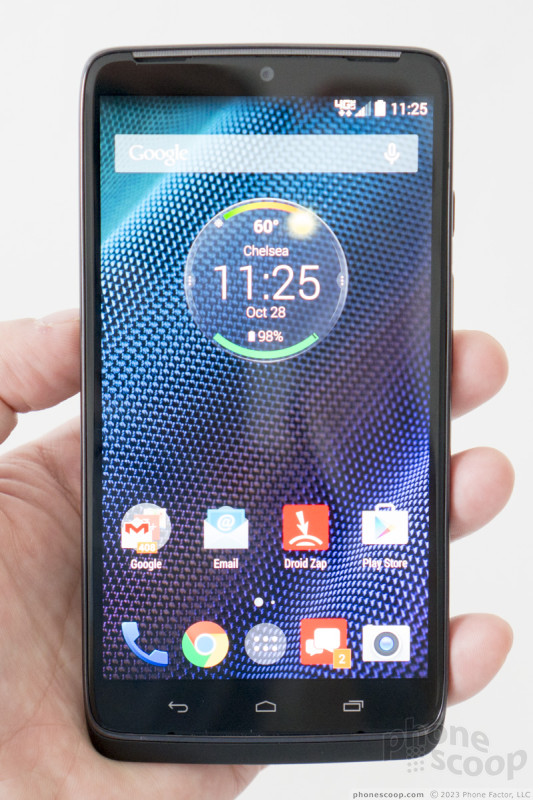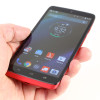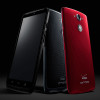Hands-On: Motorola Droid Turbo for Verizon Wireless
Oct 28, 2014, 11:23 AM by Eric M. Zeman

Motorola showed off the Droid Turbo today, a high-end handset headed to Verizon Wireless. Motorola says the phone is tough, powerful, and smart. Here are our initial impressions of the latest Droid.
The Droid Turbo is the culmination of multiple technologies all hitting their peak at the same time. For instance, the quad HD screen, the Snapdragon 805 processor, and the massive 3,900mAh battery with Turbo Charge. The Droid Turbo is Motorola's most spec'd out device ever, not counting the Nexus 6, and Verizon Wireless is the only carrier that will sell it.
Motorola checked every in-demand feature off its list. Motorola explained that better battery life is the number one requested feature from smartphone owners, so it packed a huge battery into the slim frame. The Droid Turbo offers up to 48 hours of battery life (like last year's Droid Maxx) and can fill up the battery with 8 hours' worth of life in just 15 minutes. I'm truthfully surprised it is as slim as it is given the massive power supply buried inside.
The phone has 2560 x 1440 pixels filling up the 5.2-inch screen. The quad HD resolution is the highest currently available to smartphones. Motorola chose AMOLED technology for the panel's light source. It looks fairly bright, and the resolution is impressive. Honestly, though, I was more impressed by the LG G3's quad-HD screen. The Turbo's is excellent, but I've seen slightly better.
I was genuinely surprised at the phone's size. It's fairly compact considering how large the display is. I was easily able to hold and use it in a single hand. I didn't find my thumbs stretching to reach the far side of the screen. The phone is made from two different materials — ballistic nylon and metalized fiber — and for whatever reason that means the two versions are slightly different in terms of measurements. We're talking just 0.6mm here, though, and a few grams. I thought both models were comfortable to hold and use. The metalized fiber is smooth and has a soft-touch feel to it. The top end of the phone is thicker than the bottom, and it tapers gently giving the phone an almost wedge-like profile. I like that the edges aren't square and are instead angled. The back surface is rounded to help the phone fit better in your hand. The materials are good and the build quality is decent. Other phones provide a more upscale experience, but the Droid Turbo is certainly not cheap feeling.
Motorola didn't stray far from the Moto X's design language as far as the back surface is concerned. The camera module is flanked by two LED flashes. The design around the camera differs just a bit between the nylon and fiber variants. The "M" logo is beiow the camera module, but isn't indented the way it is on the Moto X.
The buttons aren't the best. Both the volume toggle and the screen lock button are on the right edge of the phone. They have rather sharp profiles and textured surfaces that I didn't find very comfortable. The screen lock's button provides good travel and feedback, but the volume toggle does not. It's a bit mushy. The stereo headphone jack is on top and the microUSB port is on the bottom.
The phone is sealed up tight. You can't pull or swap the battery and you can't add more storage via memory cards. The SIM card slot is hidden under the volume toggle, just like last year's Droids. (Perhaps this is why the volume toggle rather stinks). The phone is offered in either 32GB or 64GB configurations to make up for the lack of memory card support. There's no camera button.
It may be sealed up, but the Turbo is not waterproof. The insides are coated with a water repellent material that protects the chips and silicon from sweat, rain, and other small amounts of moisture. Motorola claims the nylon and fiber shells are both strong enough to withstand your typical, daily abuse, but it is not a rugged phone.
The Turbo runs stock Android 4.4.4 KitKat, though Android 5.0 Lollipop is right around the corner. The device is chock full of Motorola's unique features, such as Active Display and Moto Voice. Thanks to IR sensors, the Active Display will light up when you wave your hand over the screen. Active Display offers notifications for missed calls, new emails, and text messages. It's one of Motorola's best ideas. The phone also benefits from the voice signal processor found in the Moto X, which means it can wake up on command and accept voice prompts for launching apps and services. One new feature is called Droid Zapp. It lets Turbo owners share media, such as photos, with other nearby devices with a simple flick of the finger. It sounds like DLNA, but it's not. It uses Verizon's cloud storage service to push the photos up to the cloud and then provides a link to recipients who can choose to download and/or view the photo if you want. The tool is smart enough to understand it should only share with those in close proximity to the phone, and the content can be protected by a PIN code.
These are our first impressions of the Droid Turbo. Obviously, we'll publish a full review in the very near future.
Comments
No messages
























 Review: Motorola Droid Turbo for Verizon Wireless
Review: Motorola Droid Turbo for Verizon Wireless
 Motorola Droid Turbo Boasts 48-Hour Battery Life
Motorola Droid Turbo Boasts 48-Hour Battery Life
 Motorola Droid Turbo
Motorola Droid Turbo



